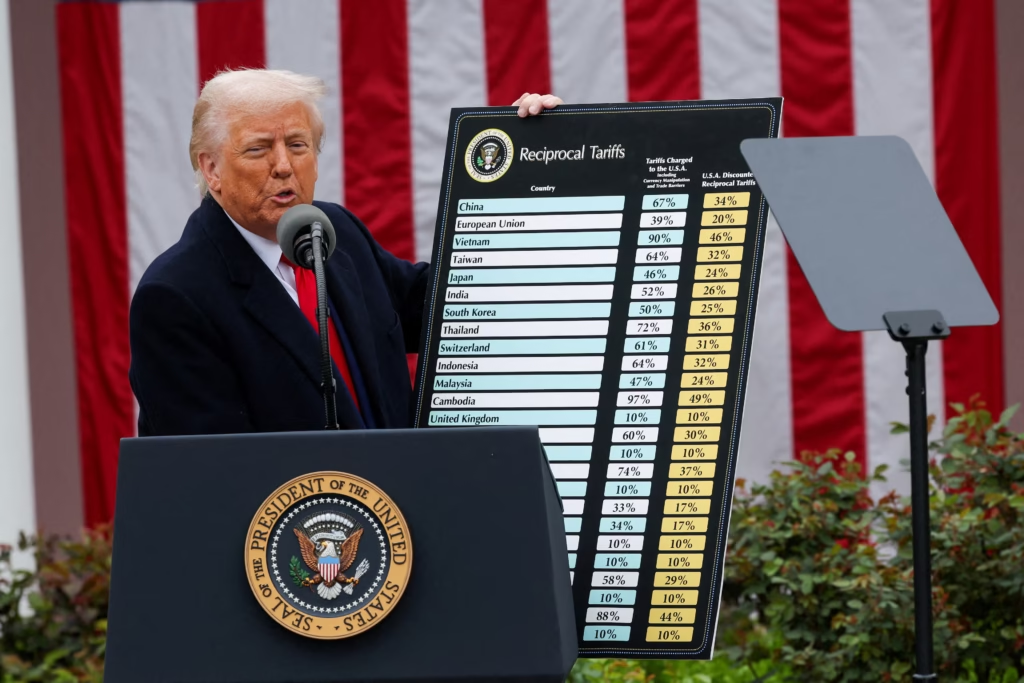Discover how US trade tariffs under Donald Trump Tariffs policies are creating challenges and opportunities for India’s textile and apparel industry.

India’s textile industry, which contributes over 2% to the nation’s GDP and employs more than 45 million people, has been navigating a period of unprecedented global uncertainty. With renewed tariff tensions between the United States and its trade partners under Donald Trump’s administration, Indian textile exporters find themselves caught between competitive pressure, dwindling demand, and shifting global supply chains.
As global trade realigns post-pandemic, the implications of US tariff measures extend far beyond pricing – they are reshaping how, where, and what India produces for the world.
The Reemergence of Tariff Barriers
Donald Trump’s administration is once again taking an aggressive trade stance, reinstating import tariffs on Chinese goods, with ripple effects across Asia. While India is not the primary target, it feels the indirect impact. Higher US tariffs on Chinese textiles have opened a narrow window for Indian exporters to gain market share. However, this advantage is overshadowed by higher input costs and weakened global consumer demand.
According to data from the Ministry of Commerce and Industry, India’s textile exports declined by nearly 8% year-on-year during the first half of 2025. The US, which accounts for almost 27% of India’s textile exports, has seen reduced purchasing orders due to rising retail inflation and cautious consumer spending.
Ripple Effect on India’s Value Chain
The Indian textile ecosystem depends heavily on imported raw materials such as synthetic yarns and specialized fabrics from China. When tariffs hit those products, input costs for Indian manufacturers rise sharply. Many small and medium enterprises, which form the backbone of India’s garment-export clusters in Tiruppur, Surat, and Ludhiana, are struggling to maintain margins.
Moreover, buyers in the US are demanding greater transparency and compliance with sustainability standards. These demands require fresh investment in technology, which adds additional strain to exporters already managing tight cash flows.
Shift in Global Trade Dynamics
As the US-China trade conflict intensifies, several Southeast Asian economies – Bangladesh, Vietnam, and Indonesia – are emerging as stronger competitors for India. Low labor costs, supportive export policies, and trade agreements such as the Regional Comprehensive Economic Partnership (RCEP) are helping these nations secure larger shares of US and European apparel imports.
India’s exclusion from RCEP continues to hurt its competitive positioning. Experts from the World Bank have pointed out that India must enhance trade logistics, reduce tariffs on inputs, and invest in export-friendly infrastructure to stay competitive in the evolving global scenarios.
Government Policy and Industry Response
The Indian government has rolled out multiple incentive programs such as the Production Linked Incentive (PLI) scheme for man-made fibers and technical textiles. While these initiatives have boosted investment intent, tangible benefits are yet to reach smaller exporters dealing with cash flow constraints.
The Confederation of Indian Textile Industry (CITI) has urged for policy measures including faster GST refunds, export credit at lower interest rates, and a review of India’s free trade agreements. The aim is to make Indian exports more resilient against rising tariff barriers and currency volatility.
Industry analysts believe that diversification in markets – especially toward the Middle East, Africa, and Latin America—could help reduce dependency on the US and EU markets. Increasing investments in digital platforms and e-commerce exports presents another emerging opportunity. (Source: https://unctad.org/news/global-trade-2024-retreats-after-record-highs)
Opportunities Hidden Within Challenges
Despite short-term setbacks, there are regions where Indian textiles are gaining traction. The preference for Non-Chinese sourcing destinations among Western brands presents an upside for compliant and certified Indian manufacturers.
Furthermore, there’s renewed global demand for sustainable and ethically produced textiles. India, with its growing focus on organic cotton and circular manufacturing, is well-positioned to tap into this shift. According to International Trade Centre (ITC) data, global trade in sustainable fashion is projected to grow by over 10% annually through 2028, providing a potential lifeline for adaptive exporters.
Path Forward: Building Long-Term Resilience
The path forward for India’s textile export sector involves embracing three key priorities:
1. Supply Chain Localization – Reduce dependency on Chinese inputs by strengthening domestic capacities in man-made fiber production and textile machinery.
2. Market Diversification – Explore non-traditional markets through trade missions and digital export channels.
3. Innovation & Sustainability – Invest in energy-efficient manufacturing and eco-certified production to align with global ESG norms.
Additionally, skill development and digital transformation across textile clusters can enhance competitiveness and help businesses adapt to market disruptions faster.
Conclusion
The reintroduction of tariffs and trade frictions under Trump’s economic policy has undoubtedly challenged India’s textile industry. However, it also underscores the need for structural reform and innovation. With cohesive government support, private sector adaptability, and strategic partnerships, India can convert this trade turbulence into an opportunity for sustainable growth and global leadership.